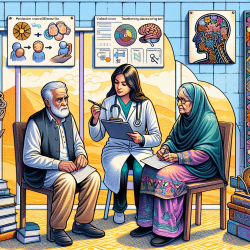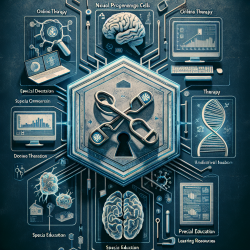Introduction
In the realm of speech-language pathology, data-driven decisions are pivotal for optimizing therapeutic outcomes. While the field primarily focuses on human communication, insights from diverse scientific disciplines can offer valuable perspectives. A recent study titled Prediction of optical properties of rare-earth doped phosphate glasses using gene expression programming explores the potential of Gene Expression Programming (GEP) to predict optical properties in materials science. This research not only advances materials science but also exemplifies the power of data-driven methodologies that can be translated into our field.
Understanding Gene Expression Programming
Gene Expression Programming, a novel computational technique, allows for the modeling of complex systems by capturing nonlinear relationships between variables. In the context of the research, GEP was utilized to predict Judd–Ofelt (JO) parameters, which are crucial for understanding the optical properties of rare-earth doped phosphate glasses. The ability to predict these parameters without extensive experimental work highlights the efficiency and potential of GEP in various fields, including speech-language pathology.
Applications in Speech-Language Pathology
While the direct application of optical properties research may seem distant from speech-language pathology, the underlying principles of GEP can be adapted for our field. Consider the following applications:
- Predictive Modeling: Just as GEP predicts optical properties, it can be used to model speech and language development patterns in children. By analyzing data from diverse sources, we can predict potential speech and language issues and tailor interventions accordingly.
- Outcome Optimization: Data-driven models can help identify the most effective therapeutic approaches for individual children, enhancing personalized treatment plans and improving outcomes.
- Resource Allocation: Efficient prediction models can assist in allocating resources where they are most needed, ensuring that children receive timely and appropriate interventions.
Encouraging Further Research
The intersection of materials science and speech-language pathology may not be immediately apparent, but interdisciplinary approaches can lead to innovative solutions. I encourage practitioners to explore how data-driven methodologies, like GEP, can be adapted and applied to speech-language pathology. Collaborations with data scientists and researchers from other fields can open new avenues for improving therapeutic outcomes.
Conclusion
The research on predicting optical properties using GEP exemplifies the transformative potential of data-driven methodologies. By embracing such approaches, speech-language pathologists can enhance their practice, leading to better outcomes for children. As we continue to integrate data-driven insights into our field, the possibilities for innovation and improvement are boundless.
To read the original research paper, please follow this link: Prediction of optical properties of rare-earth doped phosphate glasses using gene expression programming.










